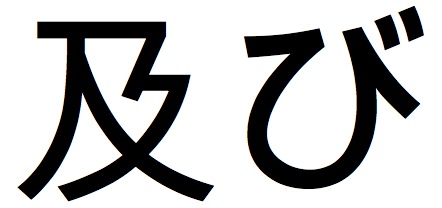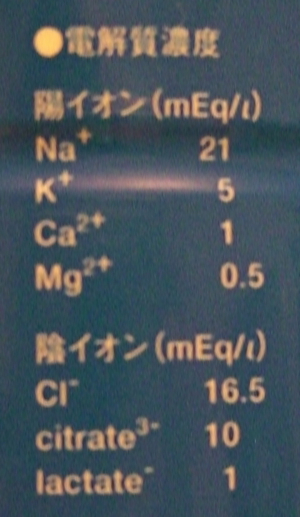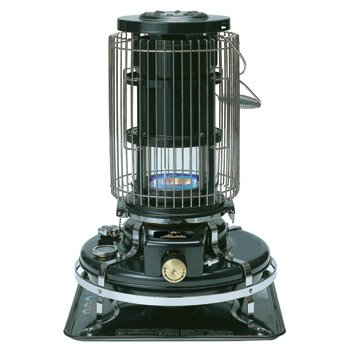
It means “and.” Shhh! Don’t tell anyone.


It means “and.” Shhh! Don’t tell anyone.
Happy Oyster Day! September is the end of the long, drought-like stretch of r-less months. In English we often say that oysters should be consumed raw only during months with an r in their name; thus, as mentioned earlier this year and celebrated last year, September 1st can be considered the beginning of oyster season. It’s open season you mollusk motherfuckers! Ready or not, here I come! This evening I’ll be heading to Shinagawa to partake of oysters. Get in touch if you would like to join.
September also marks the beginning of the run up to the announcement of the 2009 Nobel Prizes this October. Last year I wrote a series of posts with sections of yet to be translated Haruki Murakami prose, trying to stir up interest before the Nobel announcement (in five parts: 1, 2, 3, 4, 5). I will do the same over the next month, starting today. Let it begin.
With the goal of stirring up even more interest in Murakami between now and mid-October, when the Nobel Prizes are announced, I will post a small piece of unpublished Murakami translation once a week from now until the announcement.
For the final post last year, I translated two of the super-short stories from the collection 夜のくもざる. One thing I did not mention in that post is the fact that the 36 stories were chosen from a batch of 44 or so. Murakami initially wrote the stories as a series of advertisements for the J. Press clothing line from ’85 to ’87 and then for Parker fountain pens from ’93 to ’95. When he edited the stories for collective publication, he cut a number of them including the very first one – ホテルのロビーの牡蠣, “Hotel Lobby Oysters,” published in April, 1985.
Because this story was not included in 夜のくもざる, the only ways you can read it these days are by owning a copy of one of the original magazines (a number of publications ran the first set, among them Men’s Club) or by visiting the National Diet Library. I did the latter last December and have since translated it for this day. Without further ado, I give you Haruki Murakami’s “Hotel Lobby Oysters,” a perfect story for Oyster Day:
Hotel Lobby Oysters
At the time I was sitting on the hotel lobby sofa and vaguely thinking about oysters. Not lemon soufflé, not pencil sharpeners – oysters. I don’t know why. I just suddenly realized that I was thinking about oysters.
The oysters I was thinking about on the hotel lobby sofa were different from oysters thought about anywhere else. They were shaped differently, they smelled differently, and their color was different, too. They weren’t oysters harvested in some cove. They were pure oysters harvested in a hotel lobby. …
*Update. This is an excerpt of the full story.
I’ve been so busy at work the past month that I’ve been almost completely unable to prep anything for Oyster Day. Sadly next weekend is booked for me (Brasil Festival being one of the planned activities), so no big event. I will be going out to the Grand Central Oyster Bar in Shinagawa on Tuesday evening around 7pm. Get in touch if you’re interested in joining.
Also, in honor of Oyster Day, this week’s Monday post will be published on Tuesday.
The Google Image results for this one are so awesome that I won’t even bother embedding images. Just check out the difference in the results for cameraman, and then the results for カメラマン.
A cameraman always works with video, whereas a カメラマン works with photographs most of the time, and should therefore be translated as photographer. It can be a video cameraman, but Yahoo gives that as the second definition and provides 撮影技師 as a more specific alternative.
It’s kind of cute to think that カメラマン is simply a “man with a camera” in Japanese. It tickles me in the same way as when this Portuguese girl once told me she bought a new “photographic machine,” which is the literal translation from Portuguese. Remember, laughing at and being laughed at is a good thing when learning a language.
And the moral of the story is… don’t submit to the katakana! Know how to use them and make them work for you! And think before you translate them.
I was hydrating the other day with a Pocari Sweat and happened to notice this on the back label (apologies for the image quality):

Ah, ha! I thought. I recognize イオン, and I remember all of those elements from chemistry class. All of the elements on top have plus signs next to them, and the ones on the bottom have minus signs, so 陽 (pronounced よう) must mean “positive,” and 陰 (いん) “negative.” Nice. Keeping your eyeballs peeled will learn you a lot.
This reminds me – these two characters are also used as the positive and negative for test results. The only thing scarier than getting back the results of an HIV test is getting back the results of an HIV test in a foreign language and realizing holy shit I cannot understand a single coddamn thing on this piece of paper. Knowing these two kanji will hopefully prevent you from having to worry any longer than is absolutely necessary. 陰性 (いんせい) is what you are hoping for.
Keep Your Eyes Open was a series I meant to continue after this initial exploration last year. Clearly I haven’t been keeping my eyes open wide enough.

Worked all weekend, so all you get today is this lousy photo of a funny shirt I saw on the way to work a while back. Love the fact that the English is perfectly grammatical but written in slightly childish script.
My least favorite part about reading Japanese dictionaries is all the madness: tiny fonts, jam-packed pages, single kanji that float around and explain things (e.g. what part of speech a word is, what particles are attached to the end). And to be perfectly honest, I’m a lazy man who doesn’t appreciate the whole having to physically pick up a book and actually find the word thing.
Enter Yahoo 辞書. This is a little trick that I picked up at work. Many of the Japanese people in the translation department (who basically play the mirror image of my role, i.e. E-J) use this, and occasionally they’ve sent me links from entries when I ask a question about a Japanese word.
Lots of great things about the dictionary. First of all, it’s digital, which means I only need to move my ten digits. Second, it has a clean layout with simple, easy to read definitions. If you’ve wanted to start using Japanese dictionaries but have been worried that you won’t understand the definitions, this is a great dictionary to start with.
Take for example the word 彷徨う. Plug it into the dictionary and you’ll see immediately that the reading is さまよう. Alternate kanji are さ迷う (which already provides a partial definition). There is a bit of the madness ([動ワ五(ハ四)]), of which I only recognize the 動 as a verb marker and 五 as a 五段動詞 (although I can’t recall the specifics of what that means), but it soon gives way to the clean cut definitions presented in an easy-to-read layout: 1 – 迷って歩きまわる, 2 – あちこち動く, 3 – 判断に迷う. I love it.
They occasionally provide examples of usage from great works of literature such as, in this case, The Tale of Genji…not that I understand them, but still a cool feature. You can also click on the tabs to access the thesaurus (類語) or J-E (和英) dictionaries for the word. Great dictionary. Just need to train myself to use it more often.
(Don’t forget to check out this past entry about how to read from context and use Japanese dictionaries.)
I’ve found another great set of equalities for my never-ending quest to debunk all mistranslations of 外来語 and 和製英語.
ストーヴ = 
stove = 
I’m sure the usage of ストーヴ overlaps slightly with the English stove, as is evident from a Google Images search, but for the most part ストーヴ refers to a Japanese-style kerosene heater. Anyone who has ever taught English on JET, especially out in the countryside, is probably well familiar with these. I have great memories of them. In addition to heating the room, on top there is always a kettle boiling or a big tub of water being warmed – like water usage in toilets, another great example of Japanese efficiency. In the winter many of my students warmed up their lunch milk in the tub of water. Be warned: doing this will make you extremely sleepy and may even affect your post-lunch teaching ability.
Stoves as Americans think of them, on the other hand, are few and far between in Japan. The ovens underneath take up space that isn’t available in Japan, and there’s also less of a tradition of bread-making and other baking. In most cases a smaller microwave oven will do the trick. Gas or electric ranges are common and generally referred to as レンジ. Additionally, there is a small fish-sized drawer which noobs can use to grill eggplants and toast. The area where the oven would be is generally storage space where Japanese people keep all their cleaning supplies and 2D girlfriends.
You have to be a particularly cold-hearted person not to fall in love with the Japanese rail system. The way it all runs on time (barring natural disaster or extreme personal injury). The way local train routes overlap in order to make long distance travel cheap. The comfort and service of the limited express trains. The sheer speed of the shinkansen.
One of my personal favorite parts of the JR system is the array of services you can find within the station gates. Shopping, food, personal hygiene. It amazes me that there is enough demand for these services inside stations. It’s hard enough to run a restaurant outside of a station. Although I guess the foot traffic alone makes a station the ideal place for a business.
I recently spent 12 hours over two days in search of beer within the station gates on the Yamanote Line. The rules? Konbini beer does not count. Preference for draft beer. Must not leave station gates.
Here is what I found:
JR Station Pub Crawl – Yamanote from Daniel Morales on Vimeo.
Shimbashi – Goody De Cafe is on the lower level of the Karasumori Exit (might be called the Shiodome Exit?) just before heading down to the Yokosuka line. They have Guiness in a can and that silly machine that shakes the pint to foam it up a bit. Assorted snacks and some other beer on tap, too. Open from breakfast onward on weekdays and Saturday (closes early afternoon on Saturday).
Tamachi – Becker’s is by the South Gate, and they have Kirin Ichiban Shibori on tap in addition to the standard menu of burgers and sandwiches. I was surprised a station as small as Tamachi had a restaurant with beer, although it later became obvious that real estate must be pricy at some of the bigger stations, so perhaps it actually makes more sense that a station like Tamachi has one.
Shinagawa – Shinagawa Station has several beer options including sushi and some actual sit down restaurants (all near the Central Exit). There is an eCute shopping center as well, which is where the cafe Paul is located. They have most excellent pastries (cheese bread in the video), Heineken on tap, and patio seating. Definitely one of the classiest places to get a beer in Yamanote Line stations.
(Yes, giant jump here from Shinagawa to Ikebukuro. I checked pretty much all of the stations and was surprised to find no beer-serving restaurants, although I feel like Ebisu and Shinjuku probably have them somewhere. If you can confirm any beer-serving restaurants, I’ll add them to the 号外 list below. Send a pic and I’ll put that up, too.)
Ikebukuro – London Pub is by the Chuoguchi 1. (That’s what I wrote down, but I was drinking and it was a month ago, so it might be Central 1.) Loved this place because it had Bass on tap in addition to a couple of other beers and a variety of little snacks. I had the tortilla chips. Reminded me of a HUB Pub miniaturized to fit within the station, and I wouldn’t be surprised if it was connected to that chain.
Tabata – Sanuki Udon are common within stations, but not all of them serve beer. The one in Tabata Station by the North Gate has it on tap along with their standard menu of noodle dishes. Unsure if the beer was Asahi Superdry or a happoshu offering like Honnama. Not much else to say about this one.
Uguisudani – Another small station with a sad little Ajisai Soba/Udon restaurant. They had cans of Asahi Superdry, so I gave it a go. It’s actually kind of pleasant to sit up on the quiet second floor and look out over the train tracks and buildings. Walking through the walkways of the station you can also get a good view of the nearby cemetery.
Ueno – Ueno Station might have the most options in terms of beer. There are several large sit-down restaurants, including Chabuzen which is by the Iriya Exit. Mostly grilled/fried meats and seafood, but as is clear from the video they also have some decent set meals, including sara-udon, one of my favorites since visiting Nagasaki a couple years ago.
Okachimachi – Ramen Suika is by the North Exit and has super frosty glasses of Sapporo in addition to their ramen and gyoza menu. Just across the way from Ramen Suika is a small Italian restaurant that also has beer. Excellent representation for such a small station.
Akihabara – Akihabara Station also has good representation near the Central Exit including a nice curry restaurant and a couple of soba/udon places. I went with Nama Soba near the Showa-dori Exit because it was the only restaurant I saw that is actually inside and outside the station at the same time. There’s a divider in the middle of the eating area that separates the two (that’s what the beer is resting on in the video), but the kitchen is just one big area. Very cool. Judging from the posters, they serve Superdry.
Kanda – Elysee Cafe and Dining Bar was the uncelebrated gem of the restaurants I went to. It’s in the basement of the South Exit and is actually surprisingly expansive once you descend the stairs. They have a very respectable selection of whiskey, shochu and nihonshu in addition to wine and lots of beer – Suntory Premium Malts and one other Japanese beer on tap, and Guiness and Corona in bottles. Draft beer and a lot of the liquors are half off on Wednesdays and Fridays, which means you can get a decent sized glass of Premium Malts for 325 yen! They also have a reasonably priced food menu with lots of choices.
Tokyo – As you’d expect, Tokyo Station has a lot of choices for beer and sit down restaurants (some of my favorites are in Tokyo GranSta in the basement), but the best beer on tap is by far Gargery Stout at Tokyo Grand Cafe which is right between the Yaesu South and Yaesu Central Exits. Nice roasty stout. Highly recommended. I got there too late to try any of the food, but it looks pan-Asian, which also happens to be the theme of their import beers – they have nearly a full selection of tasteless Southeast Asian beers from Singha to Tsingtao and everything in between.
号外 Additions:
Osaki – According to my roommate, the Becker’s in Osaki Station now serves beer, although I explicitly asked for it and was given only a strange look when I went last month.

Here’s a cool language thing I learned on TV and have heard used at work. I was watching Mecha-ike at some point and Okamura was joking about how much he wanted to be paid to do a certain job. (It may have been when he was doing the wedding MC “offer” [Sadly all the YouTube video links on that page are dead, but there is still explanation of different Mecha-ike skits, including “offers”].) He said he wanted to be paid 2並び (にならび). Fortunately for me there are tons of subtitles on Japanese TV and they displayed “¥22,222,” so I instantly knew that 2並び literally means “2 lined up.” Not lined up forever but in the basic Japanese counting unit – the ten thousand.
This works for any number: 11,111 (1並び), 22,222, 33,333 (3並び), 44,444 (4並び), 55,555 (5並び), etc all the way up to 9. Apparently we use it at work as a guarantee for narrators. Should we book a narrator for a job and then have the client cancel last minute, the narrator would still get their guarantee, which would be some number in this X並び format. Most excellent stuff.
I think the way Okamura used it is typical of the pattern – it’s a semi-arbitrary large amount of money but not always in the realm of impossibility.